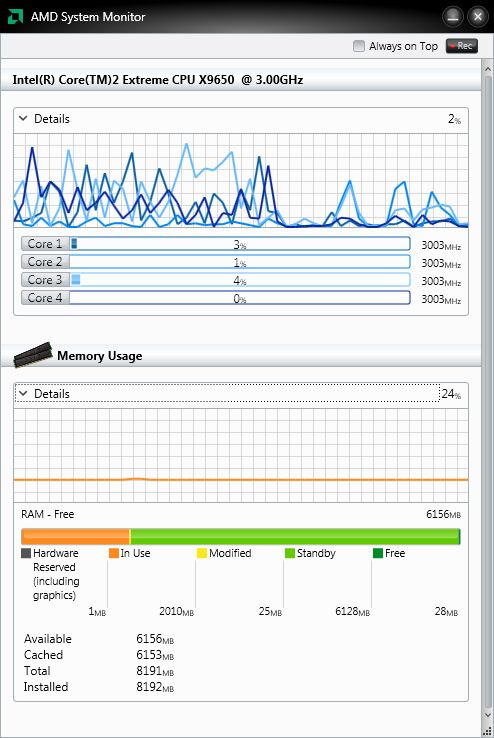

Parts of this package were inspired by radeontop. After installing lm-sensors on your system, run the following command to determine which kernel modules you need to load to use lmsensors most effectively. VRAM and GTT sizes are available as an attribute of GPUInfo.

start_utilisation_polling - Starts polling GPU registers for utilisation statistics.GPUInfo methods (see docstring for class overview) get_gpu - Returns a GPUInfo object for the device index specified.detect_gpus - Returns the number of GPUs available.query_vram_usage () > print ( vram_usage ) 3954978816 # number of bytes in useĪll documentation is in the docstrings of each function/class.Īvailable functions are (see docstrings for more info): get_gpu ( 0 ) # returns a GPUInfo object > vram_usage = first_gpu. detect_gpus () 1 # we have 1 device present, so it'll be at index 0 > first_gpu = pyamdgpuinfo. UsageĮxample: > import pyamdgpuinfo > n_devices = pyamdgpuinfo.
#AMD SYSTEM MONITOR GPU 0 INSTALL#
This means that you don't need Cython or any other dependencies to install it normally. Precompiled wheels for Python 3.7-3.10 are the default method of install. Additionally, libdrm development headers are required. The library is written using Cython, meaning that Cython and and a C compiler are needed to build and install from source. Only Linux is supported, using the AMDGPU driver.


 0 kommentar(er)
0 kommentar(er)
